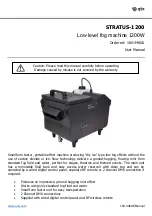
15-20 Raster Graphics
EN
TIFF Encoding
E
C
*r1A
E
C
*b2m6W(-3)U(0)A(-1)T or
E
C
*b2m6W(-3)U(2)ATT
E
C
*rC
In the TIFF encoding example above, parenthetical expressions
are used to identify control bytes. For example, the byte (-3) is shown
to represent the control byte for a repetition (minus value) of 3. The
actual value for this position is the decimal value 253. Additional
“encoded” control bytes in this sequence include: (0) for decimal 0,
(-1) for decimal 255, and (2) for decimal 2. The raster data (pattern)
bytes are represented as by the ASCII character.
Delta Row Compression (Method 3)
Delta row compression identifies a section of bytes in a row that is
different from the preceding row, and then transmits only that data
that is different (the delta data). If a row is completely different from
its preceding row, then the entire row must be sent as the delta
(not very efficient); if only one bit is different, then only one byte is
identified and sent. To reassemble the raster data rows, the printer
takes the current row (referred to as the seed row) and makes the
changes indicated by the delta data, to create the new row. The new
row (which becomes the new seed row) is used by the next delta
compression data to create another row.
A delta compression row consists of two parts, a command byte and
the replacement bytes, as shown below:
[(Command byte)(1 to 8 Replacement bytes)]
The command byte identifies two things: 1) the number of
replacement (delta) bytes that follow; and, 2) where to position the
replacement byte string (the left offset). The replacement bytes are
some number (up to eight bytes) of consecutive bytes that are used
to create the new row from the seed row.
Summary of Contents for LaserJet 4100
Page 1: ...Part I Click here to access Part II on hp com ...
Page 2: ......
Page 26: ...Contents 14 EN ...
Page 44: ...2 10 The Page EN ...
Page 54: ...3 10 The Print Environment EN ...
Page 70: ...4 16 PCL Job Control Commands EN ...
Page 80: ...5 10 Page Control Commands EN Figure 5 3 Changing Print Direction on a Page ...
Page 82: ...5 12 Page Control Commands EN Figure 5 4 Text Area Within the Page ...
Page 110: ...6 16 Cursor Positioning EN ...
Page 120: ...7 10 Fonts EN Figure 7 11 Bitmap Character Figure 7 12 Scalable Character ...
Page 122: ...7 12 Fonts EN ...
Page 152: ...8 30 PCL Font Selection EN ...
Page 166: ...9 14 Font Management EN ...
Page 182: ...10 16 User Defined Symbol Sets EN ...
Page 237: ...EN Character Descriptor Formats 11 55 Figure 11 5 Class 2 Character Data ...
Page 240: ...11 58 Soft Font Creation EN Figure 11 6 Portrait Character Example ...
Page 241: ...EN Character Descriptor Formats 11 59 Figure 11 7 Landscape Character Example ...
Page 270: ...13 4 The PCL Print Model EN Figure 13 3 Effect of Transparency Modes on Images ...
Page 276: ...13 10 The PCL Print Model EN Figure 13 4 Shading Patterns ...
Page 277: ...EN Pattern ID Area Fill ID Command 13 11 Figure 13 5 Cross Hatch Patterns ...
Page 290: ...13 24 The PCL Print Model EN ...
Page 297: ...EN Pattern ID Area Fill ID Command 14 7 Figure 14 1 Shading Patterns ...
Page 298: ...14 8 PCL Rectangular Area Fill Graphics EN Figure 14 2 Cross hatch Patterns ...
Page 341: ...EN Raster Graphics Example 15 33 Figure 15 11Example of Raster Graphic Image Data ...
Page 342: ...15 34 Raster Graphics EN ...
Page 370: ...16 28 Status Readback EN ...
















































